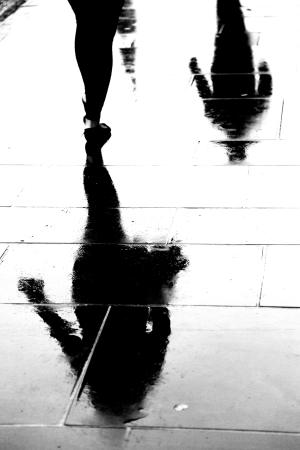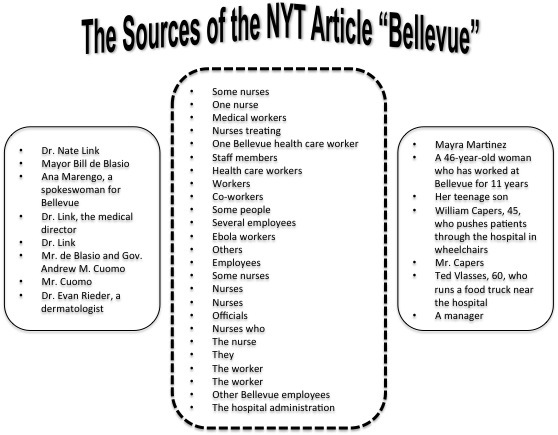From Heartbeat to Straightline- A Butterfly’s First Journey
 This post is written by Devorah Goldberg, RN, BS, a bedside nurse on a general medical-surgical unit at NYU Langone Medical Center. Ms. Goldberg is a graduate student in the Adult Nurse Practitioner program at Hunter-Bellevue College of Nursing and received her baccalaureate degree in nursing from Adelphi University in 2013. You can read more by Devorah Goldberg and her life as a registered professional nurse – the meaningful relationships with patients, families and colleagues and her experiences facing rough spots as she moves along her journey as novice nurse on her blog, Tales of RN DG.
This post is written by Devorah Goldberg, RN, BS, a bedside nurse on a general medical-surgical unit at NYU Langone Medical Center. Ms. Goldberg is a graduate student in the Adult Nurse Practitioner program at Hunter-Bellevue College of Nursing and received her baccalaureate degree in nursing from Adelphi University in 2013. You can read more by Devorah Goldberg and her life as a registered professional nurse – the meaningful relationships with patients, families and colleagues and her experiences facing rough spots as she moves along her journey as novice nurse on her blog, Tales of RN DG.
The staggered breaths painted shapes on the monitors. It jotted out perfect waves for one minute, and childlike scribbles the next. Those scrawled shapes relayed fluctuating signals; between hope and dread, between life and death. It was as if the ‘angel of death’ was there, had his sword in hand, target area marked, blade in place, but hesitant to make the hit. The breaths were present, but were the waves of storm rather than the waves in a surfers dream; rocky, damaging and unpredictable. The heart beat like a stationary race-car, rapid but thready, and unable to perfuse the body’s arterial racetrack. The translucency of the skin, windowed a dense yet motionless being.
Lips moved in prayer, while minds weighed the depth and upshots of their decisions. DNR. Legs raced as if on a mission, but never leaving as far as the edges of the bed. The corridors signaled the finish line, only centimeters away but reaching it meant the end was met, so the feet tread those areas cautiously. Those lips whispering prayers, dreaded, yet awaited the finish line.
The hours passed by. The screens fluctuations between the dreaded straight line and a perfect QRS wave confused the humans reading the signals. They asked me if it was the end, the monitor seemed unsure. I enter the quarters of the beating monitors possibly masking a life gone by; I am face to face with the thin wrinkled being curled up in the sheets, gasping for each breath, and a morphine infusion running in attempt to wash the pain away.
I felt the pulse. Thready and fast. It seemed to weaken as the seconds passed by. I kept my hand on the pulse, for at that moment it was the only sign of life, yet proof of its nearing end. Perhaps if I let my fingers go, that life might slip away, right through my fingertips.
My job is to promote life, and here I was anticipating death. My job is to chase away the ‘angel of death’ and here I felt like mapping out the directions for his next stop.
The ‘angel of death’ was well acquainted with the being curled up in the wrinkled sheets; the ‘angel of death’ had chased this being before. He didn’t wait till her 93 years to greet her. His multiple introductions to this being began over 65 years prior when she cooked for the Germans in the barbed wired gates of Auschwitz. The ‘angel of death’, marked his target back when she was out there fighting diseases in the concentrations camps, he was there when she used to sneak in potato peels to share with her bunk mates, he was there every morning when she awoke before sunrise to the threatening barks of the soldiers on guard.
Now she can surrender, because she has already made her victory. Every day that she lived, and made lives through the offspring she produced and raised, made her the victor. We watched as her chest rose and fell with trepidation, each movement using much effort, until all efforts were used. We called the doctor, he marked the time, and we covered her. Her soul had won its last fight.
The monitors stop, their frantic scribbles and the straight line of defeat stretches to eternity; and our hands meant for healing are cuffed to our backs preventing us from evading the inevitable footsteps of ‘the end”. Yet perhaps an even greater challenge is when that line marches on, merging with all the other listless strings of lifeless pulses. This was the first, so it hurt; but so did my first IV insertion and the many ‘firsts’ of painful things I had to initiate for the good of the humans it was inflicted upon. Time and experience forms an armored defense that can make each patient’s death a little less personal and a little more algorithmic. Experts might argue that such is an uncomfortable inevitable, but deems it unwise to bear the burden of each meeting with the ‘angel of death’. Yet one can also choose to take each opportunity to familiarize oneself with the tragedy it brings and practice the touch of caring that goes beyond the life of the being in the bed sheets. The challenge is to continue to be the blessing that escorts one’s journey from one world to another.
How can we be that blessings despite the forces that monotones those moments into listless tunes with each death we encounter? Dr. Vidette Todaro-Franceschi , RN PhD FT advises that it is how one faces death that prevents that burnout, that oscillating rhythmicity, that predictable sensation we may acquire as we repeatedly guide patients and families towards their loved one’s line of defeat . How can we conquer that intoxicating compassion fatigue hovering and buzzing over our nursing care, threatening to sting our compassion with every straight lined monitor and pulseless being that we encounter?
We swap that hovering sting with a “butterfly power” and we “flutterbye”.
Dr.Vidette Todaro-Franceschi, RN, PhD, FT coined this verb based on meteorologist Edward Lawrenz’s idea of the “butterfly effect”. The flapping wings of a butterfly that we see are connected to another event somewhere out in this world, and we were meant to witness it for a reason.
Dr. Vidette Todaro-Franceschi describes nurses providing care as butterflies flapping their wings, We think we are a separate entity providing care for a specific human being, but we are really one entity with the human being cared for. We are present during this most vulnerable and unforgettable time in a patient and their loved ones lives, because we were meant to be there and be a part. To be truly compassionate is not to see compassion as what a caregiver does, but to view our nursing care with a sense of belonging.
Wiklund and Wagner write how we are one with individual and their family, we are mutually engaged and must acknowledge our own and the other’s dignity and vulnerability to consistently provide compassionate care. We must view each experience as event connected to us, that we are a part of it; we are one with the patient and the experience.
Death happens to each person only once. When we guide those through that death path, it is a first for us, as one entity, at that time. The first one always hurts; and so with each race to meet that straight line, we must slip out of our cocoon and flap our wings with our patient. Each race confronted is a first; to flap our wings, to “flutterbye”.
Every greeting with the ‘angel of death’ should not build a comfort and familiarity that dampens the sadness that rides along with its presence, rather each experience forms and molds us. That is what will define one’s commitment towards learning and perfecting our practice and skill of caring. Rather than be smoothed out and molded, with each experience I hope to be sculpted and refined.
From my ‘Novice’ meeting to my ‘Expert’, I shall attempt to not to lose sight of the person under the sheets, the being behind the numbers and the family tiptoeing close by.
Written by Devorah Goldberg, RN, BSN
This post is written by Devorah Goldberg,






